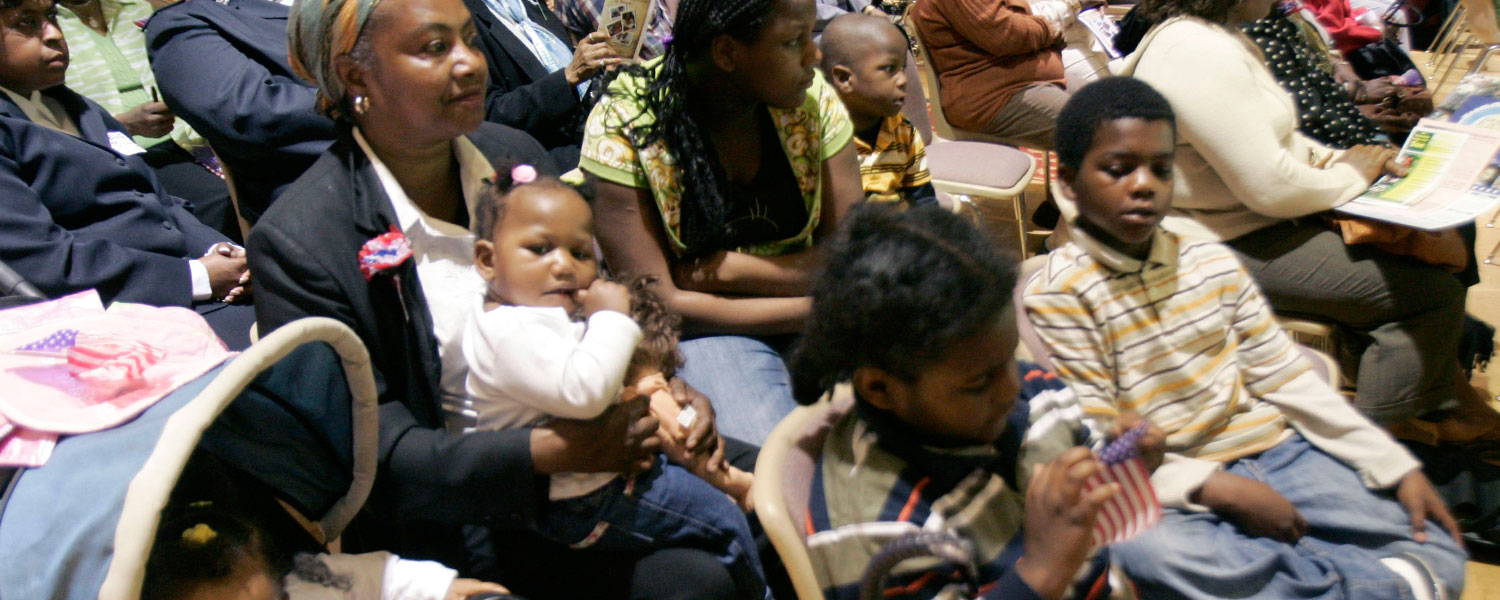
I still remember returning from maternity leave several months ago to a colleague’s warm welcome, “How does it feel to be a working mother?” At the time I remember feeling overwhelmed and exhausted, but also thinking how fortunate I am to have a job that’s stable, predictable, and flexible, where I can set my hours and easily take paid time off to attend to family matters.
While I have standard work hours (and have luckily obtained a coveted slot in an accredited child care center that matches my work schedule), one in five adult workers in the United States work most of their hours between 6 p.m. and 6 a.m. or on weekends. The rate is even higher for low-income workers; 27 percent of low-income working mothers with children under age 12 work a regular evening or night shift or an irregular schedule that changes from day to day or week to week.
How does nonstandard work affect child care?
Nonstandard workers have few choices when it comes to choosing child care. According to the 2012 National Survey of Early Care and Education, only an estimated 8 percent of center-based providers and 34 percent of listed home-based providers in United States offer care during nonstandard hours (defined as weekdays after 7 p.m., overnights, or on the weekend). Moms who work a nonstandard schedule are more likely than standard workers to rely on children’s fathers and relatives to provide care, and they are also more likely to piece together multiple child care arrangements.
Researchers at the Urban Institute and the University of Chicago recently explored the effect of nonstandard work on low-income families’ ability to maintain both government-funded child care assistance and their primary child care arrangement. In a survey of over 600 subsidy clients in Illinois and New York:
- Nearly two-thirds of respondents reported typically working nonstandard hours.
- Thirty-eight percent had limited advance notice of work hours (one week or less versus more than one week).
- Thirty-one percent said they had no input into their work schedule.
- One-third “very often” or “sometimes” had to go into work unexpectedly or stay later than was scheduled.
- Twenty-three percent said it was “very difficult” to take time off from work to attend to family matters.
Parents who worked a job with unexpected hours and limited schedule control were more likely to leave the child care assistance program within a year and a half of entering. Working nonstandard hours, however, did not significantly affect parents’ ability to keep a subsidy. Families explained the difficulties of reporting job schedules and verifying income eligibility when work hours fluctuated, but as long as the number of hours did not vary, working nonstandard hours did not appear to unduly complicate the process of getting and keeping assistance.
Parents who left the child care assistance within the first six months had a 69 percent greater risk of leaving their child care provider. While some families were able to keep their provider without government assistance—with financial help from family and working out payment plans with flexible providers—families who left their provider either switched to a cheaper one, relied on family and friends, or went without nonparental child care altogether. Only a minority of families primarily used center-based care or licensed family child care after leaving the subsidy program.
What effect does nonstandard work have on children’s development?
Evidence suggests that when mothers work nonstandard schedules, children have poorer cognitive and language development and more behavioral problems. Another study found that exposure to mothers’ fluctuating work hours is associated with greater behavioral problems in children, as well as an increase in the likelihood of school absenteeism, repeating a grade, and being placed in special education.
Standard and nonstandard workers do not appear to differ in terms of their mental health, quality of their home environments, or their interactions with their young children, but their children do differ in terms of their access to and use of center-based child care—the type of care that most benefits a child’s learning and later cognitive outcomes.
Why are parents’ nonstandard schedules bad for children?
In most studies, researchers clump together work performed during evening hours (typically 6 p.m. or 7 p.m. is the cutoff start time), overnight care, and weekend care with schedules that are fluctuating or variable week to week. But regularly working an evening or overnight shift is arguably different from working different days and times each week—and with that, having little notice of shift times and little control over one’s schedule.
Perhaps what’s most damaging is the fluctuation of work schedules and the resulting stress. Fluctuating hours mean children may experience different settings, different caregivers, and different meal and sleep schedules day to day.
Children benefit from having a consistent and predictable routine; the lack of stability not only creates stress for parents arranging care, but also negatively affects their children’s development.
Tune in and subscribe today.
The Urban Institute podcast, Evidence in Action, inspires changemakers to lead with evidence and act with equity. Cohosted by Urban President Sarah Rosen Wartell and Executive Vice President Kimberlyn Leary, every episode features in-depth discussions with experts and leaders on topics ranging from how to advance equity, to designing innovative solutions that achieve community impact, to what it means to practice evidence-based leadership.